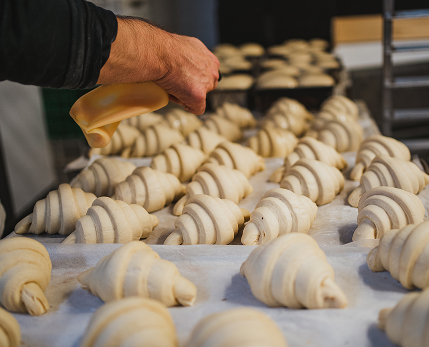The Art of Slow Baking: Why We Take Our Time

There’s a rhythm to good bread. Not the click of machines or the rush of timers, but the slower, steadier pace of dough rising in its own time. At Furl, this rhythm guides everything we do. It’s quiet. Humble. And essential.
Slow baking isn’t a trend here — it’s a philosophy. It begins in the dark, before the city stirs, when the lights in our kitchen flicker on and hands begin mixing flour, water, and salt in silence. Our loaves don’t follow a schedule set by efficiency; they follow the tempo of fermentation, of instinct, of care.
When we say our bread takes time, we don’t mean hours. We mean nearly a full day — sometimes longer. We allow our dough to rest, to stretch, to breathe. We don’t rush the proofing. We don’t pump in heat or cut corners. The crust forms slowly, gaining depth and flavor. The inside remains soft, tender, and open. Natural fermentation breaks down the grains, unlocking flavors and making the bread more digestible and nourishing.
We choose traditional methods — long fermentation, hand shaping, slow cold proofing — not because we’re looking backward, but because they still make the best bread. These techniques have endured for centuries for a reason: they honor the grain, respect the process, and produce something both rustic and refined.
When a loaf comes out of our oven, it crackles as it cools. The crust is deep and caramelized. The crumb is soft and fragrant. And the smell — warm, earthy, honest — fills the space around it. This is not just bread. It’s a story told in flour and fire.
In an age of speed, our loaves are a kind of resistance. A way of saying that some things — nourishment, craft, care — can’t be rushed. We don’t bake for mass production. We bake for the table, the morning ritual, the simple joy of tearing bread apart with your hands and sharing it with someone you love.
Bread, when made slowly, becomes more than food. It becomes memory. Community. Home.
